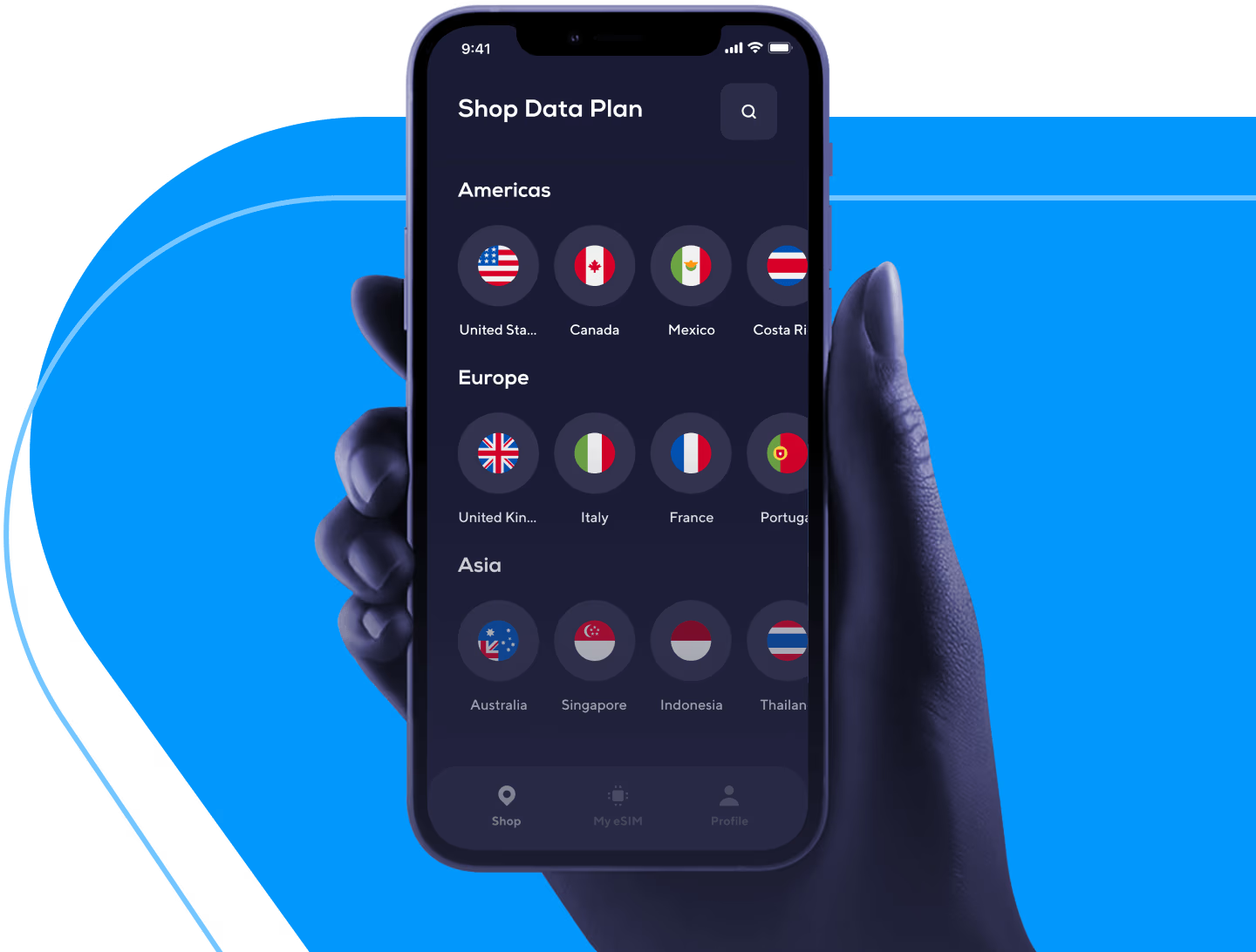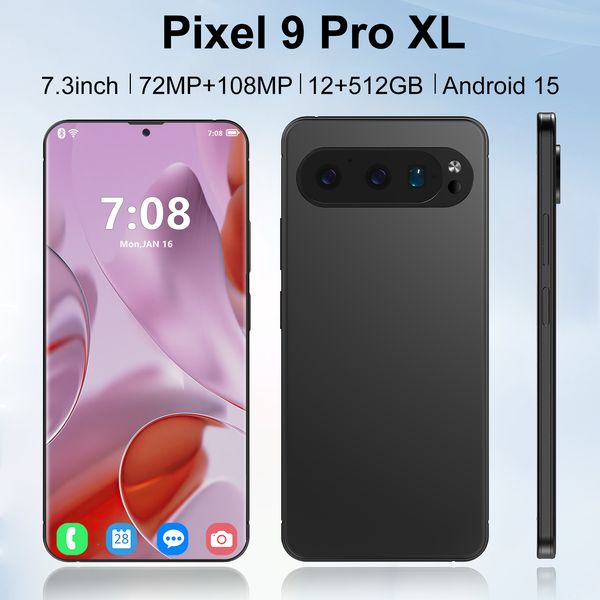
Who Will Control the Future of Connectivity: Telecoms, Tech Giants, or eSIM Upstarts?
For over three decades, mobile connectivity was ruled by a few familiar empires. Telecom giants owned the spectrum, built the networks, printed the SIM cards, and set the roaming prices. Every text, every call, every megabyte of data passed through their toll gates. Travelers had no real choice — you either paid your operator’s roaming fees or you didn’t connect at all.
But the ground beneath this trillion-euro industry is shifting faster than a 5G signal handoff. The rise of eSIM technology, embedded directly into devices rather than sitting as plastic chips, has cracked open the door for new players — app-based brands, digital marketplaces, and even airlines or travel startups — to step inside the once-closed telecom club.
Meanwhile, Big Tech is quietly rewriting the rules. Apple normalized eSIM activation and went eSIM-only in the U.S., pushing millions of users to ditch plastic cards forever. Google is doing the same across Android, integrating carrier selection right into the setup flow. Amazon and Microsoft are building private 5G and IoT networks for enterprises, creating connectivity ecosystems that live entirely inside their cloud platforms.
Suddenly, telecom operators aren’t just competing with each other—they’re competing with trillion-dollar ecosystems and dozens of nimble eSIM upstarts who can sell global data plans with two taps.
The stakes couldn’t be higher. Whoever controls connectivity in the next decade won’t just sell data—they’ll control the gateway to every connected experience: travel, payments, IoT, cars, and beyond. The question isn’t only who provides the signal anymore. It’s who owns the customer relationship, the data, and the moment of activation.
This isn’t a small power shuffle—it’s a full-scale reordering of the digital hierarchy. And if you care about how we’ll all connect, roam, and communicate in the next 10 years, it’s worth asking: will the future belong to the old telecom empires, the cloud-driven tech giants, or the eSIM disruptors rewriting the rulebook from their laptops?
Let’s unpack the battle lines—and see where the smart money and the smartest travelers, are already heading.
The Stakes: Owning the Last Mile (and the First Hello)
Connectivity used to be simple. Operators built networks; you bought a SIM; roaming was a pain. Now the “SIM” can be software, the “network” can be private and pop-up, and your “carrier” might be an app you installed at the airport. Apple pushed the industry hard by normalizing eSIM setup flows on iPhone and (in the U.S.) going eSIM-only for new models, which nudged millions of travelers into app-based connectivity for the first time. Apple’s own support documentation lays out just how trivial it’s become to add or transfer plans on-device—no kiosk, no paperclip, no plastic.
Control in this phase isn’t just spectrum or towers—it’s distribution, discoverability, and who owns the activation moment. That “hello” screen during setup is the most valuable retail shelf in telecom.
Incumbents: Moats Are Lower, But They’re Not Drained
Mobile network operators (MNOs) still hold the spectrum licenses, national brands, interconnects, and regulatory muscle. EU “roam like at home” rules even turned roaming from a profit center into a hygiene factor through 2032, locking in consumer expectations that international data shouldn’t feel like a luxury add-on. That pressure forces operators to find margin elsewhere—bundles, enterprise, private networks, fixed-wireless, wholesale.
At the same time, the network itself is being rethought. Open RAN promises vendor flexibility and cost control, but 2024–2025 showed mixed signals: some research points to modest revenue growth off a small base; operators remain cautious about true multivendor interoperability at scale. Translation: incumbents are experimenting, not betting the farm.
And then there’s iSIM: the SIM baked into the chipset rather than a separate secure element. Qualcomm, Thales and partners have been demonstrating this for years; GSMA now frames commercial, certified iSIM as a real runway for mass adoption across phones and IoT. For operators, iSIM could simplify logistics and enable “instant-on” devices—if they lean in. If they don’t, others will.
Tech Giants: Carriers (Without the Logo)
If you squint, AWS, Microsoft, and Google already act like meta-carriers. AWS Private 5G, for instance, lets enterprises spin up managed radio networks using CBRS spectrum in the U.S., integrated into the same cloud control plane that runs their apps. This breaks the automatic reflex that “mobile connectivity = MNO contract,” especially on campuses, factories, ports, and venues. It’s telecom-as-a-service, priced and provisioned like software.
On the consumer side, the platform gatekeepers control setup screens, app stores, and default prompts. When Apple or Google streamlines eSIM activation, they shift retail power from operator shops to on-device flows. Even hiccups—like eSIM regulatory delays affecting specific launches in China—prove the point: when platform policy changes, the whole market flinches.
The playbook is classic Big Tech: own the experience layer, standardize the messy bits, then monetize the ecosystem. Sometimes that means partnering with carriers; sometimes it means making them look interchangeable.
eSIM Upstarts: Tiny Apps, Outsized Leverage
Travel eSIM providers are the insurgents turning roaming into a price-transparent, two-tap purchase. Airalo’s 2025 funding round pushed it into unicorn territory, citing 20M+ travelers across 200+ destinations. That wasn’t a vanity milestone—it signaled that app-first distribution and clever wholesale can scale globally without building a single tower.
Analyst outlooks increasingly frame travel eSIM as a real market, not a rounding error. Recent coverage of industry forecasts points to steep growth to 2030 as awareness rises and airlines, OTAs, and retailers bundle connectivity like they bundle baggage or insurance. If roaming revenue shrinks, someone else captures the spend—and the customer relationship.
Meanwhile, the B2B end of the “upstart” spectrum is consolidating. Truphone’s assets reemerged as 1GLOBAL under new ownership, an example of how distressed, GSMA-accredited infrastructure can be rebooted to serve both enterprises and eSIM brands looking for reliable core services. Don’t be fooled by the light consumer branding—under the hood, these players provide the rails many apps run on.
The Wild Cards: Standards, Silicon, and Storefronts
Where does the growth come from next? Three levers:
- Standards & coverage. GSMA’s eSIM trackers show rapid expansion of MNO eSIM support by market and device category, with forecasts accelerating post-2026. Coverage breadth is oxygen for travel eSIM brands; for operators, it’s the channel to sell temporary, niche, or cross-border plans without cannibalizing core postpaid.
- Silicon & form factors. iSIM could shrink costs and enable “always-provisioned” devices—from kids’ wearables to connected luggage to rental cars—activated on demand by QR, app, or even context. That would push connectivity deeper into retail and hospitality flows (think: hotel check-in that adds Wi-Fi + local eSIM with one consent).
- Storefronts & bundles. Whoever owns the travel moment (airlines, OTAs, neobanks, even luggage brands) can bundle connectivity. Expect more cobranded or white-label eSIMs sold alongside boarding passes and travel insurance. This is less about technology and more about replacing carrier stores with digital shelves travelers already use.
The Next 12–24 Months: What Changes, Practically
- Activation moves to the edge. More phones ship with frictionless eSIM onboarding; more operators sell day-passes and local plans directly in-device; more apps become legitimate “carriers” for short-term travel. Apple’s evolving support materials and device flows keep training consumers to expect self-serve connectivity.
- Operators go product-led or lose the traveler. The MNOs that win won’t be the ones with the loudest airport billboard; they’ll be the ones with the best SKU design—clear local/roaming eSIMs, business travel packs, instant top-ups, and API-friendly provisioning for partners.
- Enterprise pivots accelerate. Private LTE/5G projects move from pilot to portfolio, especially in logistics and manufacturing. Cloud vendors will capture orchestration and analytics, while carriers compete to provide spectrum, backhaul, and SLAs.
- Capital keeps consolidating the middle. Expect more funding into eSIM marketplaces, connectivity orchestration, and global core platforms—and more M&A as brands seek scale, better wholesale, or a direct path into enterprise. GSMA notes record investor interest through 2025; the money is following predictable app-economy curves.
The Conclusion: A Portfolio of Power—Not a Single Winner
If you’re looking for a single “winner,” you’ll miss how the map is redrawing.
Incumbent telcos will anchor national coverage and compliance, but their edge shifts from retail to reliability, wholesale, and enterprise services. The clearest comps are how airlines ceded the front-door customer to OTAs but still control the metal and the slots. Operators that embrace product-led eSIM (including travel SKUs) and partner distribution will keep share; those that cling to legacy roaming margins will watch their airport pop-ups turn into museum pieces. EU roaming policy already fixed consumer expectations at “fair and included,” so the value will be created elsewhere.
Big Tech will dominate orchestration and experience. Think of AWS Private 5G as a preview: the cloud becomes the control plane for mobility just as it became the control plane for compute. Apple and Google, by governing activation UX, can tilt retail gravity toward whatever mix of carrier, MVNO, or marketplace best serves the platform. The best analogy is payments: networks (Visa/Mastercard) stayed essential, but Apple Pay and Stripe own the experience and merchant relationship.
eSIM upstarts win the traveler’s moment—and force prices to sanity. Airalo’s unicorn round isn’t just a headline; it’s a signal that distribution + UX + smart wholesale can carve out a durable, global niche. Expect a “Spotify era” for roaming: a few big brands, many niche specialists, and intense competition on catalog (coverage), curation (plans), and convenience (activation). As CCS/industry coverage suggests, the volume is coming; the question is who owns the shelf space.
If you’re a hospitality brand, airline, OTA, or neobank, you’re suddenly in the connectivity business whether you meant to be or not. If you’re an operator, your new customer is often another brand, not the traveler. And if you’re an eSIM app, your differentiation must move beyond price into trust, support, and partnerships—because commoditization follows awareness.
So, who controls the future? No single throne. Instead, we’ll see a portfolio of power:
- Operators control the fabric.
- Platforms control the experience.
- eSIM brands control the moment.
Alertify’s bet: the most valuable companies will be those that bridge these layers—standardizing activation, smoothing cross-border provisioning, and packaging connectivity where travelers already shop. The sources of power are shifting from spectrum alone to spectrum plus software plus shelf space—and the players that master all three will write the next chapter.













